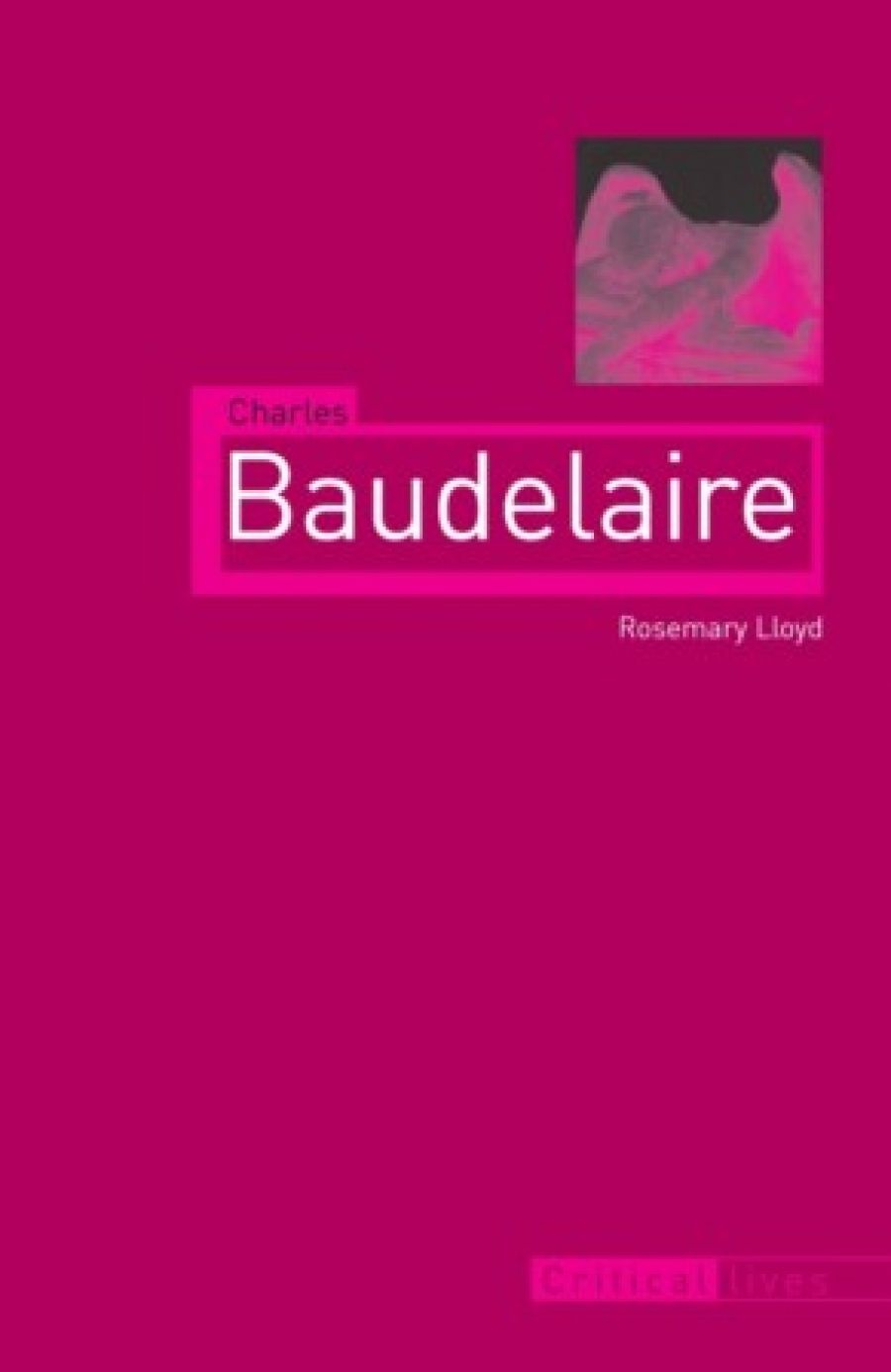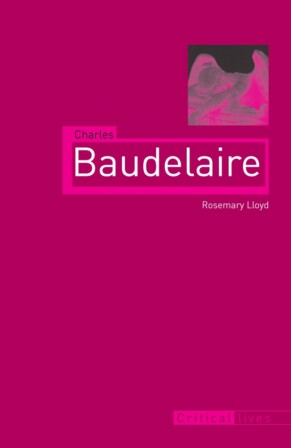
- Free Article: No
- Contents Category: Biography
- Custom Article Title: Literature of the street
- Review Article: Yes
- Article Title: Literature of the street
- Online Only: No
- Custom Highlight Text:
Charles Baudelaire (1821–67) occupies a pivotal position in the development of modern writing, not just as the poet of Les Fleurs du mal (The Flowers of Evil, 1857) but as the proponent, in his critical writings, of a modern aesthetic based on the experience of city life. More than any other French poet of his time, he marks the transition from the Romantic to a proto-modernist poetic style and stance. T.S. Eliot recognised the nature of this achievement when he said that for him the significance of Les Fleurs du mal was summed up in the first lines of ‘Les sept vieillards’ (‘The Seven Old Men’), in Baudelaire’s vision of the ‘teeming city, city full of dreams, / where ghosts in broad daylight accost the passer-by’. ‘I knew what that meant,’ Eliot said, ‘because I had lived it before I knew that I wanted to turn it into verse on my own account.’
- Book 1 Title: Charles Baudelaire
- Book 1 Biblio: Reaktion Books, $34.95 pb, 189 pp
- Book 1 Cover Small (400 x 600):

- Book 1 Cover (800 x 1200):

The explosive growth and the rapidly changing face of Paris during the Second Empire resulted in a new form of literature: a literature of the street. Baudelaire associates the poet with the flâneur, the urban stroller who abandons himself to the myriad sights and impressions of the moment. The city, presented through the fragmentary, often hallucinated perceptions of the flâneur, is the scene of modernity, of the transient, the fleeting, the contingent; it is the site of sudden encounters and unpredictable shifts. The noisy street throws individuals together, only to wrench them apart almost immediately. In the celebrated poem ‘À une passante’ (‘To a Woman Passing By’), Baudelaire evokes a chance encounter with a passing woman whose eye he catches in the crowd, sending a shock wave through his body; he imagines the passion he could have felt for her and fancies that she has known as much. But she is swept away by the seething crowd – ‘love at last sight’, in Walter Benjamin’s memorable phrase. The poem captures, in the appropriately abbreviated, sketch-like form of a sonnet, the ‘here and now’ of an instant, and in so doing transposes into literary language the aesthetics that Baudelaire elaborated in his essay ‘The Painter of Modern Life’. In the last decade of his life, Baudelaire concentrated on the writing of short prose texts, published posthumously in 1869 under the title Petits poèmes en prose, though Baudelaire’s own title was Le Spleen de Paris (Paris Spleen). They constitute, as Rosemary Lloyd writes, ‘a poetry whose modernism stems from a deliberate turn away from the beneficial constraints of form towards a freedom that facilitates a reflection of the chaotic rhythms that characterize the modern city’.
Baudelaire’s life was as vivid and controversial as his works. He was born in Paris on 9 April 1821. His father, a retired civil servant and amateur painter, died when Charles was six years old. The idyll the child enjoyed with his adored mother ended eighteen months later, when she married an army officer, Jacques Aupick, a practical man who embodied the bourgeois values that Baudelaire derided throughout his life (‘to be a useful man has always struck me as something very hideous’). Charles was sent to school in Lyon and later in Paris, but was expelled for unruly conduct. At the age of eighteen he contracted gonorrhoea. In 1841, anticipating a small inheritance from his father, he embarked on a bohemian life in Paris and ran up considerable debts. The Aupicks, hoping to save him from dissipation, sent him on a sea voyage to India, but he jumped ship on reaching La Réunion, made his way back to Paris and continued to spend money. In 1842 he contracted syphilis. At about the same time he took up with his first mistress, a minor actress, Jeanne Duval. On 7 November 1844, the Aupicks arranged to have a lawyer, Narcisse Désiré Ancelle, appointed conseil judiciaire to him and put in charge of his financial affairs. This device failed. Constantly in debt, Baudelaire tried to elude his creditors by moving from lodging to lodging, often fleeing at short notice. He would periodically appeal to his mother for money. He was a young man about town, a dandy, initially interested more in art than in literature. He wrote a long, highly original review of the Salon of 1845 and another, more mature review the following year.
When the revolution that toppled Louis-Philippe’s bourgeois monarchy broke out in February 1848, Baudelaire was seen brandishing a rifle and shouting, ‘We must shoot General Aupick. Down with Aupick!’ But his interest in revolution soon lapsed, as the new republic degenerated into chaos and bloodshed before being snuffed out by Napoleon III’s coup d’état. Like many writers of his generation, Baudelaire turned to art for art’s sake. In 1852 he tried to leave Jeanne Duval, but did not succeed; the relationship, a disaster, dragged on, while he pursued other women. On 28 June 1857, Les Fleurs du mal was published, and on 20 August Baudelaire was summoned to appear in court. He was fined 300 francs for the ‘obscene and immoral passages or expressions’ in the collection, and six poems were ordered to be removed. Poetry, Baudelaire vainly insisted in his defence, cannot align itself directly to morality, since poetry does not have truth as its object but only itself. Enraged by the court’s decision, he was whipped into a creative fervour that produced some of his finest writing. For the second edition, issued in 1861, he added thirty-five new poems and arranged the entire collection in a richer, more complex and pessimistic order. In 1864 he went to Brussels to give a series of lectures and readings. He hated Belgium, was bored by Brussels, and planned to write a book called Pauvre Belgique! He stayed on, however, too proud to return to Paris before he had somehow recovered from his debts. His health deteriorated, he suffered a stroke and lost the power of speech. In July 1866 he was taken back to Paris by his mother; he died just over a year later, on 31 August 1867.
Rosemary Lloyd’s attractive, pleasantly illustrated little book is not a biography in the conventional sense. The particular achievement of the book lies in the skill with which Baudelaire’s life and his creative and critical writing are brought together. Through numerous deftly chosen quotations from Baudelaire’s work and correspondence, all of which are given in her own elegant translations, Lloyd – an Australian-born Baudelaire scholar who has taught for many years at Indiana University – shows how closely interlinked were his life and his writing, and how much his experience of daily life and the world around him was distilled and transformed in his work. She writes perceptively about Baudelaire’s brilliant art criticism; she explores in fine detail the links between Baudelaire’s works and the literary and artistic culture of the time, from Romanticism to Symbolism, showing how deeply Baudelaire was involved in the central aesthetic and ethical debates of his age; she describes the ways in which his work and thinking were powerfully informed by contemporaneous political events, especially his experience of the 1848 revolution and its aftermath (intoxication followed by disillusion); and she narrates his battles with the public morality codes that led to the prosecution of Les Fleurs du mal and turned him into an icon, the type of poète maudit. Lucid, lively and scrupulously researched, Lloyd’s book is an admirable introduction to the complexity of Baudelaire’s mind and personality, to the development of his views on the nature and function of creative writing and to the wonders of his imagination.


Comments powered by CComment